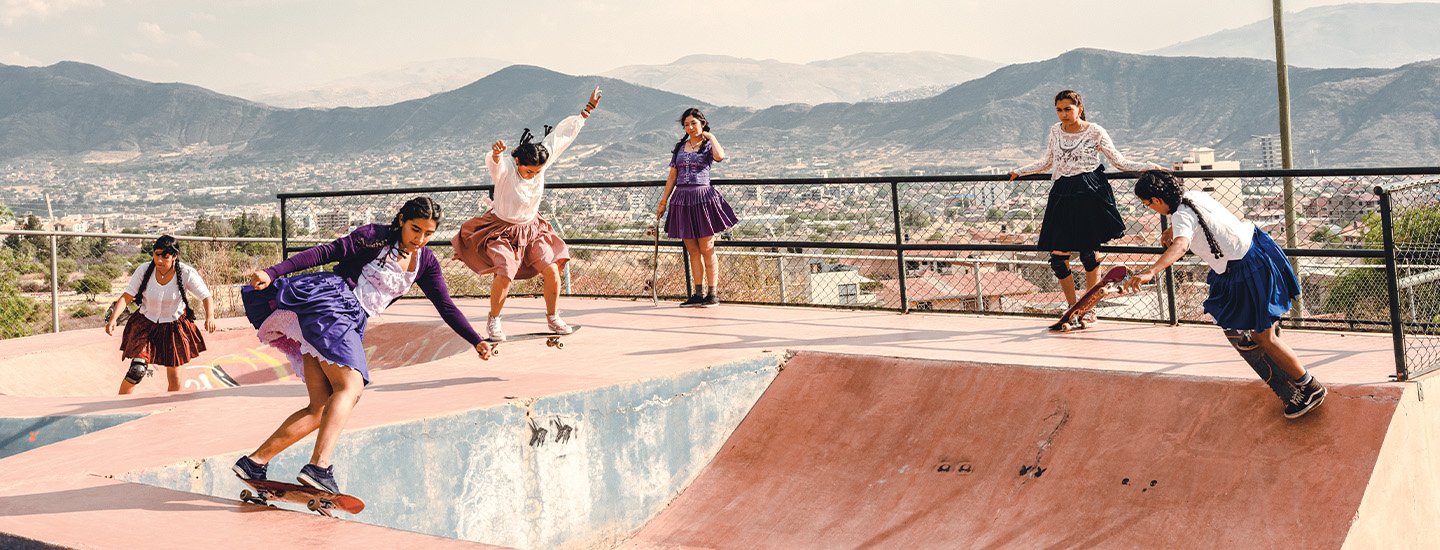Jim McMahon/Mapman®
These skateboarders in Bolivia have serious skills—and they’re using them to honor their Indigenous culture.
The women are part of an all-female group called ImillaSkate. (Imilla means “girl” in Aymara and Quechua, the two most widely spoken Native languages in the South American country.) They celebrate their roots by skateboarding in polleras, the traditional layered skirts of their ancestors.
More than half of Bolivia’s population is of Indigenous descent, but the skirts aren’t a common sight anymore. Many of Bolivia’s Indigenous people stopped wearing their traditional clothing, including polleras, in recent decades to avoid being discriminated against.

